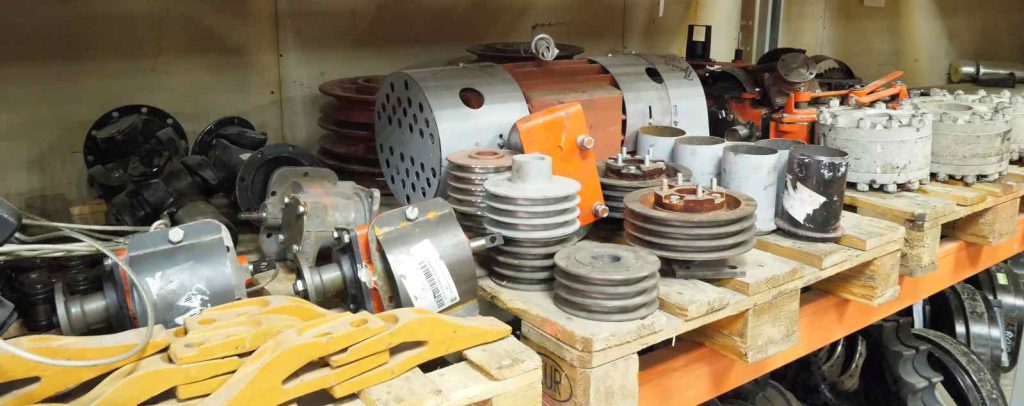Découvrez tout ce que vous devez savoir sur les casses auto à La Roche-sur-Yon dans notre guide complet. Trouvez des conseils pratiques pour vendre ou acheter des pièces détachées de qualité, ainsi que des informations utiles sur le recyclage automobile et la démarche à suivre. Ne manquez pas nos astuces pour économiser sur l’entretien de votre véhicule en optant pour des pièces d’occasion fiables et abordables. Restez informé sur les dernières tendances et bonnes adresses dans le domaine de la casse auto à La Roche-sur-Yon.
Les avantages de recourir à une casse auto à La Roche-sur-Yon
Recourir à une casse auto à La Roche-sur-Yon présente de nombreux avantages. Tout d’abord, c’est un moyen écologique de se débarrasser des véhicules hors d’usage, car les pièces détachées peuvent être recyclées ou réutilisées.
Ensuite, cela permet de réaliser des économies conséquentes sur l’achat de pièces automobiles d’occasion en bon état. Les casses auto offrent généralement un large choix de pièces détachées pour différentes marques et modèles de véhicules.
Comment choisir la meilleure casse auto dans la région de La Roche-sur-Yon
Pour choisir la meilleure casse auto dans la région de La Roche-sur-Yon, il est important de prendre en compte plusieurs critères. Tout d’abord, assurez-vous que la casse auto soit agréée et respecte les normes environnementales en vigueur. Vérifiez également si elle propose un large choix de pièces détachées pour différents types de véhicules.
Consultez les avis des clients précédents pour vous faire une idée sur la qualité des services proposés. Privilégiez une casse auto qui propose des tarifs compétitifs et transparents, sans frais cachés. N’hésitez pas à contacter directement la casse auto pour poser toutes vos questions et vérifier leur réactivité et professionnalisme.

Les démarches administratives pour vendre ou acheter des pièces détachées en casse auto
Lorsque vous souhaitez acheter ou vendre des pièces détachées en casse auto à La Roche-sur-Yon, certaines démarches administratives sont à respecter. Tout d’abord, pour vendre des pièces détachées, il est essentiel de fournir une pièce d’identité valide ainsi que la carte grise du véhicule dont proviennent les pièces. Un certificat de non-gage récent est souvent demandé pour prouver que le véhicule n’est pas gagé.
En ce qui concerne l’achat de pièces détachées en casse auto, il est recommandé de demander une facture détaillée mentionnant la provenance des pièces et leur conformité aux normes en vigueur. Assurez-vous également que les références et caractéristiques des pièces correspondent bien à vos besoins avant tout achat.
Les critères à prendre en compte pour estimer la valeur d’une voiture accidentée
Lorsque vous estimez la valeur d’une voiture accidentée à La Roche-sur-Yon, prenez en compte les critères suivants:
- L’étendue des dommages: évaluez l’ampleur des dégâts structurels et mécaniques.
- L’année, la marque et le modèle du véhicule: ces éléments influencent sa valeur de revente.
- Le kilométrage: un faible kilométrage peut augmenter la valeur malgré les dommages.
- La demande sur le marché de l’occasion pour ce type de véhicule.
- Les pièces détachées récupérables pour une revente ou réparation.
- L’état général de la voiture avant l’accident: entretien régulier, carrosserie en bon état…
- Les documents du véhicule (carte grise, carnet d’entretien, factures…).
Les services proposés par les casses automobiles à La Roche-sur-Yon
Les casses automobiles à La Roche-sur-Yon offrent une variété de services pour répondre aux besoins des clients. Ces services comprennent la récupération et le stockage des véhicules hors d’usage, la dépollution respectueuse de l’environnement, le démontage des pièces détachées en bon état, la vente de pièces d’occasion garanties, ainsi que la destruction sécurisée des épaves. Certaines casses auto proposent également un service d’enlèvement à domicile pour faciliter le processus pour les propriétaires de véhicules accidentés ou en panne.